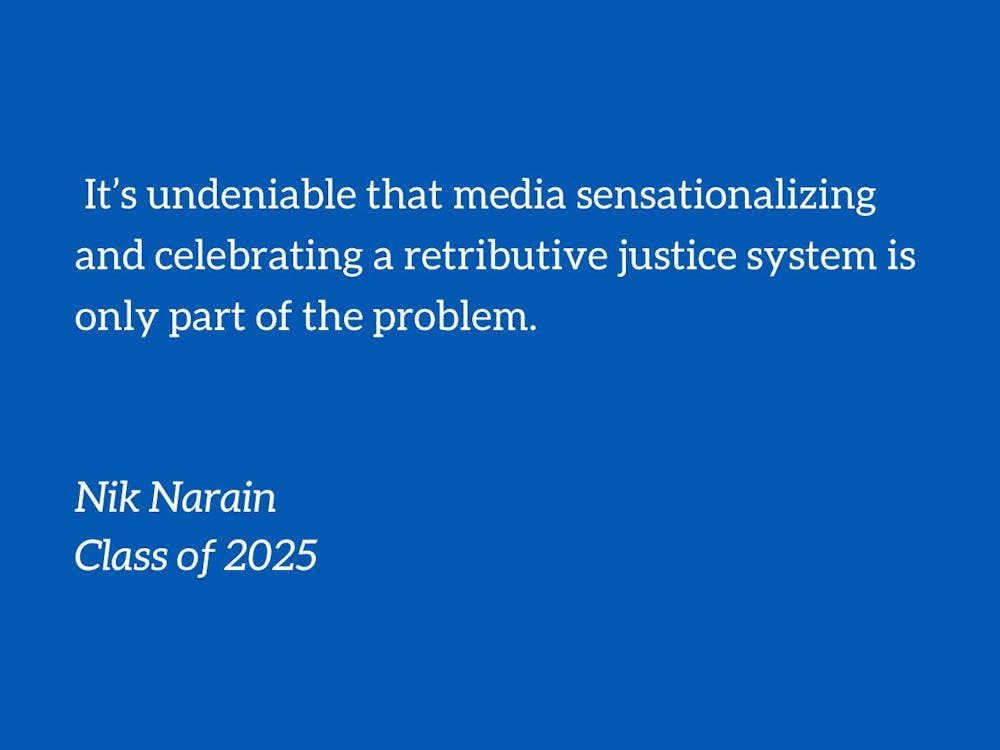Whenever my older sibling came home from college, there was one thing we’d always make time to do: watch "Criminal Minds," marathon-style. This 2005 hit crime procedural was a foundational component of our relationship as we both transitioned into confused and concerned adults with our own weekly mysteries to solve. It’s also just an all-around good show, with its 17 seasons, multiple awards and priceless Matthew Gray Gubler memes to show for it.
"Criminal Minds" is part of the much longer list of procedural drama TV shows, shows in which a conflict is introduced and resolved completely in the span of one (usually hour-long) episode. While they don’t necessarily have to center around law enforcement agencies, many of them do, such as "Bones," "Miami Vice," "NCIS," "Law & Order SVU," "The Blacklist"; the list goes on. Americans love cop dramas — they’re digestible due to their comprehensive narrative structure, thrilling due to their life-and-death stakes and deeply satisfying due to their ability to answer big questions so concisely (who did it, how, why, etc.). We always know the “good guys” will be rewarded and the "bad guys" will be punished. We always know the case will be solved and all will be well in the time span of baking a lasagna. It’s no surprise why we keep making more of these shows and extending them for, at times, decades.
In 2020, the Color for Change Hollywood project put forth a study on how TV's scripted crime genre excludes writers of color, miseducates people about the criminal justice system and normalizes injustice from the comfort of our screens. The study, in collaboration with the USC Annenberg Norman Lear Center, coded 353 episodes across 26 crime-related scripted television series in the 2017–2018 season. To put it another way, several undergraduate and graduate students watched hundreds of hours of crime shows and analyzed its scenes and characters in the name of science.
The researchers found that the majority of shows depicted their criminal justice professionals committing wrongful actions, such as conducting searches without a warrant, shooting without a cause, forcing confessions and racially profiling, among other things. They did so in a way that depicted these actions as normal and necessary in the pursuit of justice. Viewers were least likely to see victims of crimes portrayed by women of color, which is unrepresentative of national crime statistics. Out of 275 writers and 27 showrunners, 81% of showrunners and 81% of writers were white, with the majority of series having no or just one black writer. Finally, almost all shows did not discuss any of the problems within the criminal justice system, and conveyed the sense that any "ineffectiveness" within the system was due to bad police officers rather than structural issues of racism, sexism and abuse of power built into the system.
I read these critical findings with a rather hypocritical eye. On the one hand, I’m a staunch advocate for restorative justice. I believe that criminal justice should have its focus shifted from punishment to accountability and from institutionalization to reparation. I believe that restorative justice is critical to conflict prevention and has been shown to be effective in conflict resolution compared to traditional approaches. I believe that our current criminal justice system is in need of deep structural repair and that prisons and jails don’t keep people safe and don’t "solve crime" at all. But on the other hand, it’s clear my patterns of media consumption have revolved around the enjoyment of storytelling centering around a corrupt justice system, one that fundamentally contradicts these values. It’s undeniable that media sensationalizing and celebrating a retributive justice system is only part of the problem.
In 2019, CNN released a single season of "The Redemption Project with Van Jones," an eight-part TV series that offered a rare glimpse into the restorative justice process from real-world cases. A smattering of one-off local news specials, documentaries and short-form content has been instrumental to increasing awareness about restorative justice. The hashtag #restorativejustice on TikTok has over 5,000 posts alone.
But what about scripted stories and new series pitches? To fictionalize the restorative justice process in its variety of methods makes the phenomenon more accessible, more humanized, more real. To introduce a conflict and resolve it through conversation and action; to focus stories of “crime” on the people involved in the situation rather than an external agency; to highlight the inequities of our legal system in a way that is nuanced yet still optimistic, all within the span of an hour — I think that would be an amazing feat of television. What if we had show creators, showrunners and entire writer’s rooms imagining what a nonviolent form of conflict resolution might look like cinematically, not solely as a tool for exploring and celebrating abolitionist movements, but as an overall solid piece of drama television?
TV is one of the biggest ways we learn about the world. With crime TV being one of the most popular genres, media has played a major role in shaping our relationship with crime and punishment, sometimes as major as the policies around criminal justice themselves. It’s certainly not my position to tell you what to watch and not watch, but perhaps this piece can offer a nuanced perspective on the dark realities of these stories that not only miseducate but perpetuate harmful ideas about crime that inevitably contribute to real-life violence. If we want to advocate for a world of nonviolent conflict resolution and trauma-informed justice practices, we must have entertainment that reflects that.
Nik Narain is a Trinity senior. His pieces typically run on alternating Saturdays.
Get The Chronicle straight to your inbox
Sign up for our weekly newsletter. Cancel at any time.

